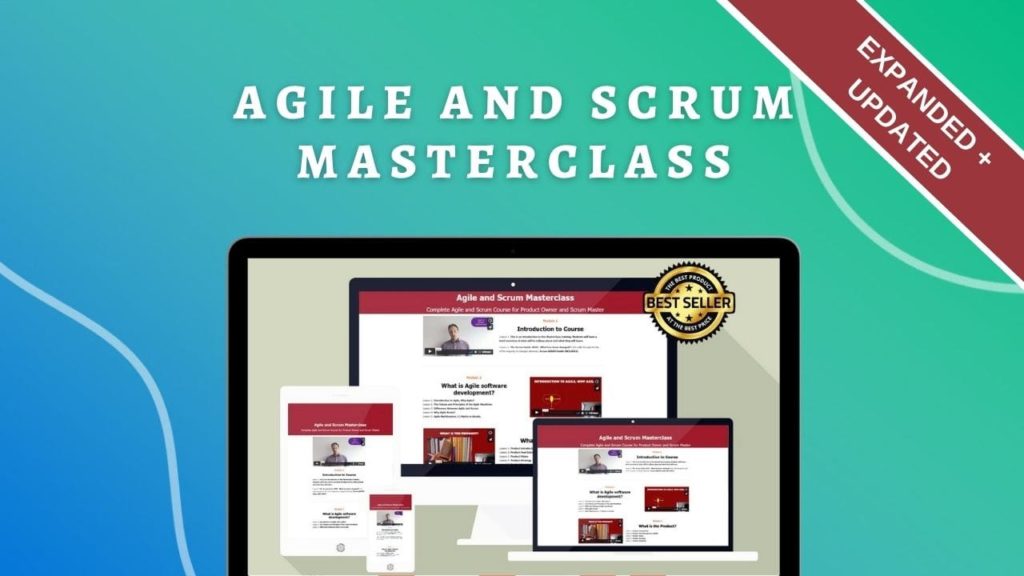The Ultimate Beginner’s Guide to Scrum: How to Boost Your Team’s Productivity and Achieve Business Success

Are You Tired of Feeling Stuck in a Dead-End Job or Career? Discover the Power of Scrum and Unleash Your Team’s Potential
Ready to start enjoying the benefits of a fulfilling and lucrative Scrum career?
Keep reading to learn the secrets of Scrum success!
Scrum is a powerful framework for managing complex projects, but it can be intimidating for beginners.
That’s why we’ve created this ultimate beginner’s guide to Scrum, packed with tips, tricks, and real-world examples to help you and your team get started.
Whether you’re an IT engineer, a startup founder, or a small business owner, this guide will show you how to use Scrum to drive business success and improve team productivity.
In this comprehensive guide, you will:
- 🚀 Learn the basics of Scrum and how it can help you achieve your goals
- 🔑 Discover the key roles and responsibilities of a Scrum Master and Product Owner
- 🚦 Understand the different stages of a Scrum project and how to manage them effectively
- 💼 See real-world examples of how Scrum has been used to boost productivity and drive business success
Scrum is a powerful framework for managing projects and teams in an Agile environment. It is based on the principles of transparency, inspection, and adaptation.
At its core, Scrum is a set of roles, events, and artifacts that help teams work together more collaboratively and productively.
The Scrum roles include the Scrum Master, who is responsible for facilitating the Scrum process and removing any obstacles that may arise, the Product Owner, who is responsible for representing the stakeholders and ensuring that the product backlog is aligned with the business objectives, and the Developers, who are responsible for delivering the product increment.
The events in Scrum include Sprint Planning, Daily Scrum, Sprint Review, and Sprint Retrospective.
These events provide opportunities for the team to inspect and adapt the product backlog, review progress, and identify areas for improvement.
The artifacts in Scrum include the Product Backlog, Sprint Backlog, and Increment.
These artifacts provide transparency and visibility into the work that needs to be done, the work that is in progress, and the work that has been completed.
If you’re a total beginner to Scrum and want to learn more, the first step is to educate yourself on the basics of the framework. There are many resources available online, such as the Scrum Guide, that can provide a comprehensive overview of Scrum.
Additionally, you can consider taking an online course or attending a workshop to gain a deeper understanding of the Scrum framework and how it can be applied in practice.
One excellent option for gaining a comprehensive understanding of Scrum is to take my Agile and Scrum Masterclass.
This bestselling course is designed for people who are tired of feeling stuck in a dead-end job or career and want to start enjoying the benefits of a fulfilling and lucrative Scrum career.
The course covers the key concepts and practices of Scrum and provides actionable insights and tips for improving team productivity and driving business success.
By taking this course, you will gain the knowledge and skills you need to become a successful Scrum Master or Product Owner and start experiencing the personal satisfaction and fulfillment that comes with the job.
Scrum is the discipline that gives us the power to create the future we want, not just react to the future that happens to us.
Don’t miss out on the opportunity to boost your team’s productivity and achieve business success with Scrum.
Enroll in our Agile and Scrum for Business course today and start your journey to becoming a Scrum Master and Product Owner!
Don’t Miss Out: 10% Discount + Free eBook for Today’s Orders!!!
Use code "OFF10" at checkout for 10% off today!

